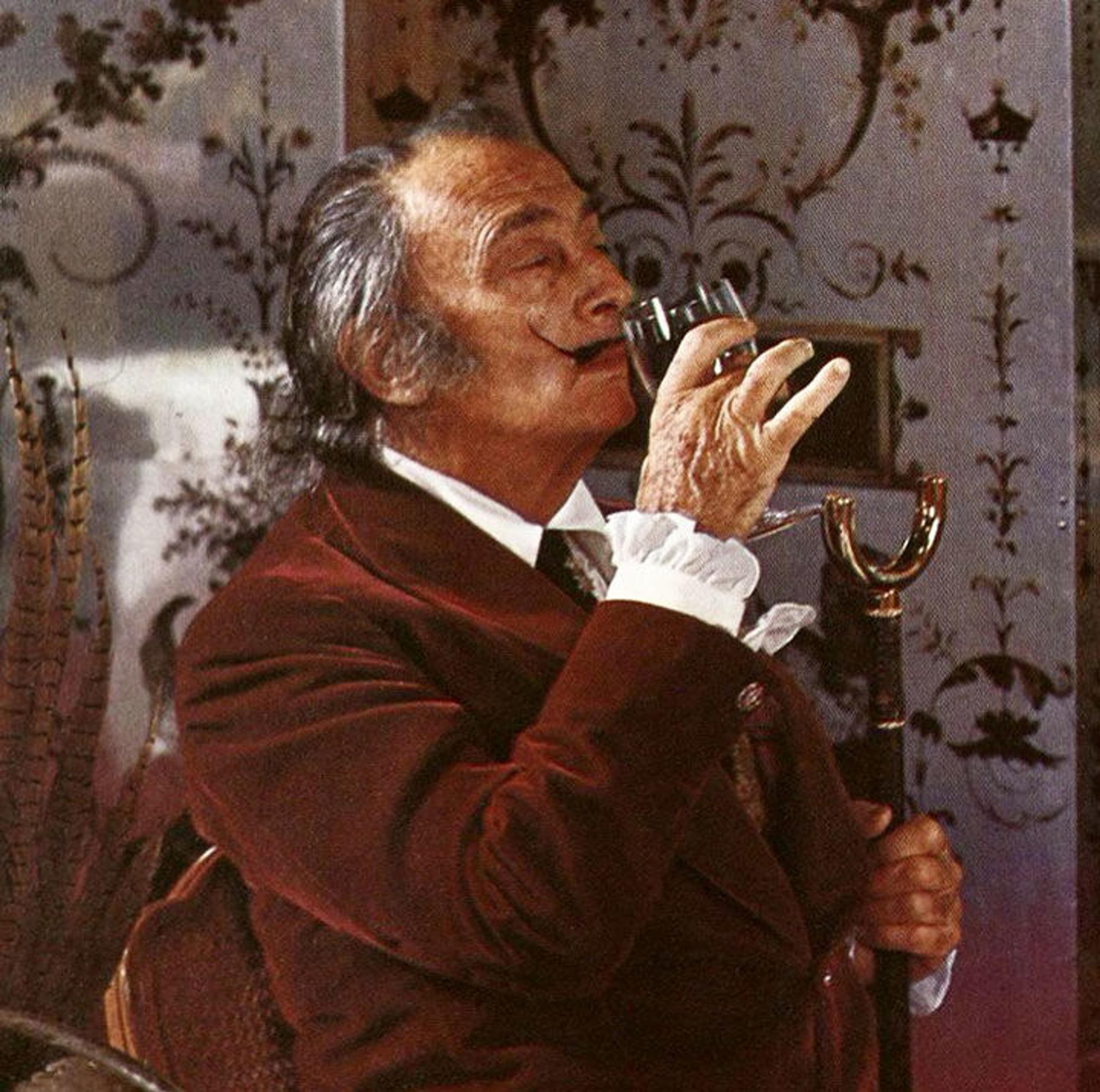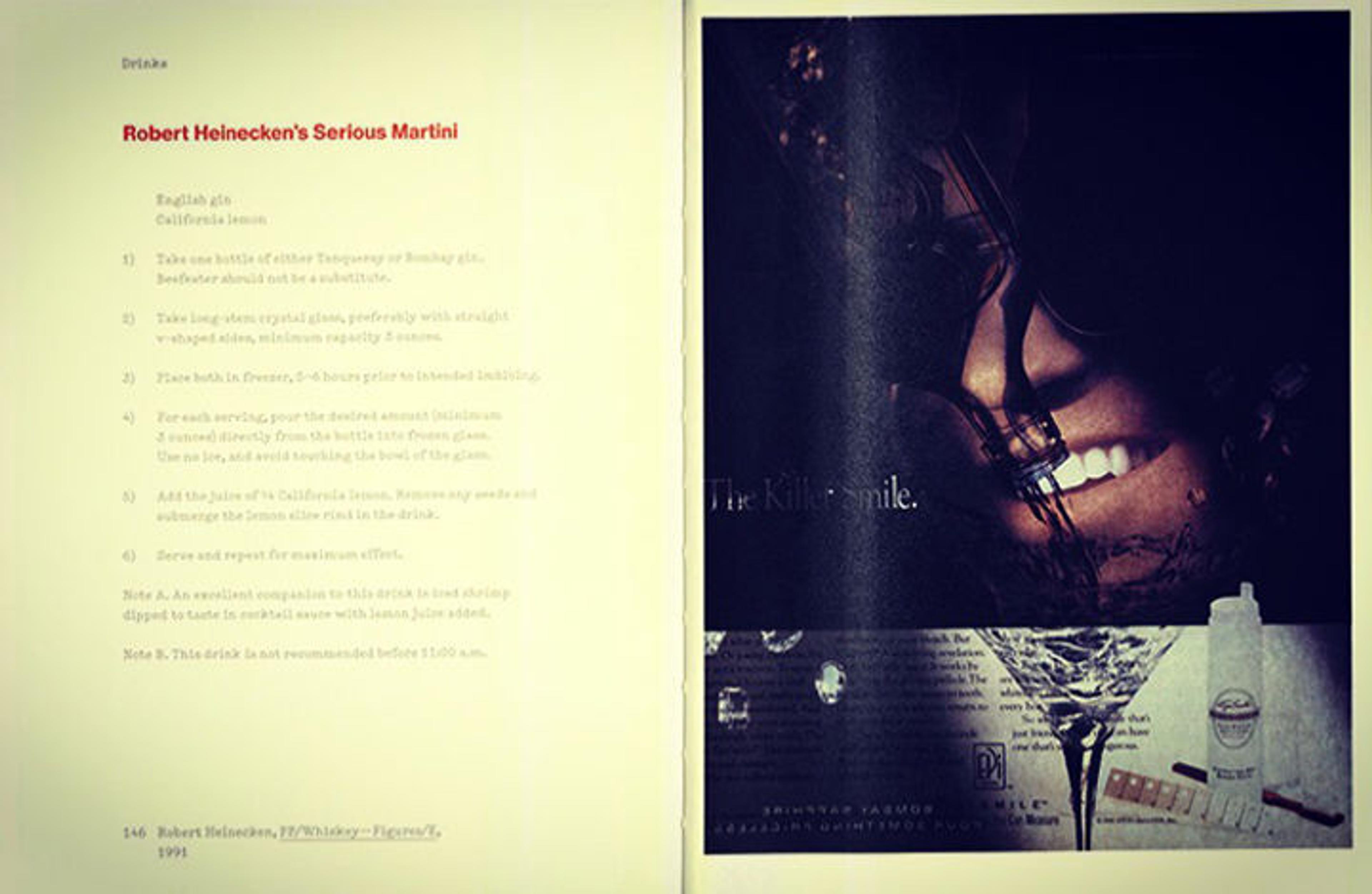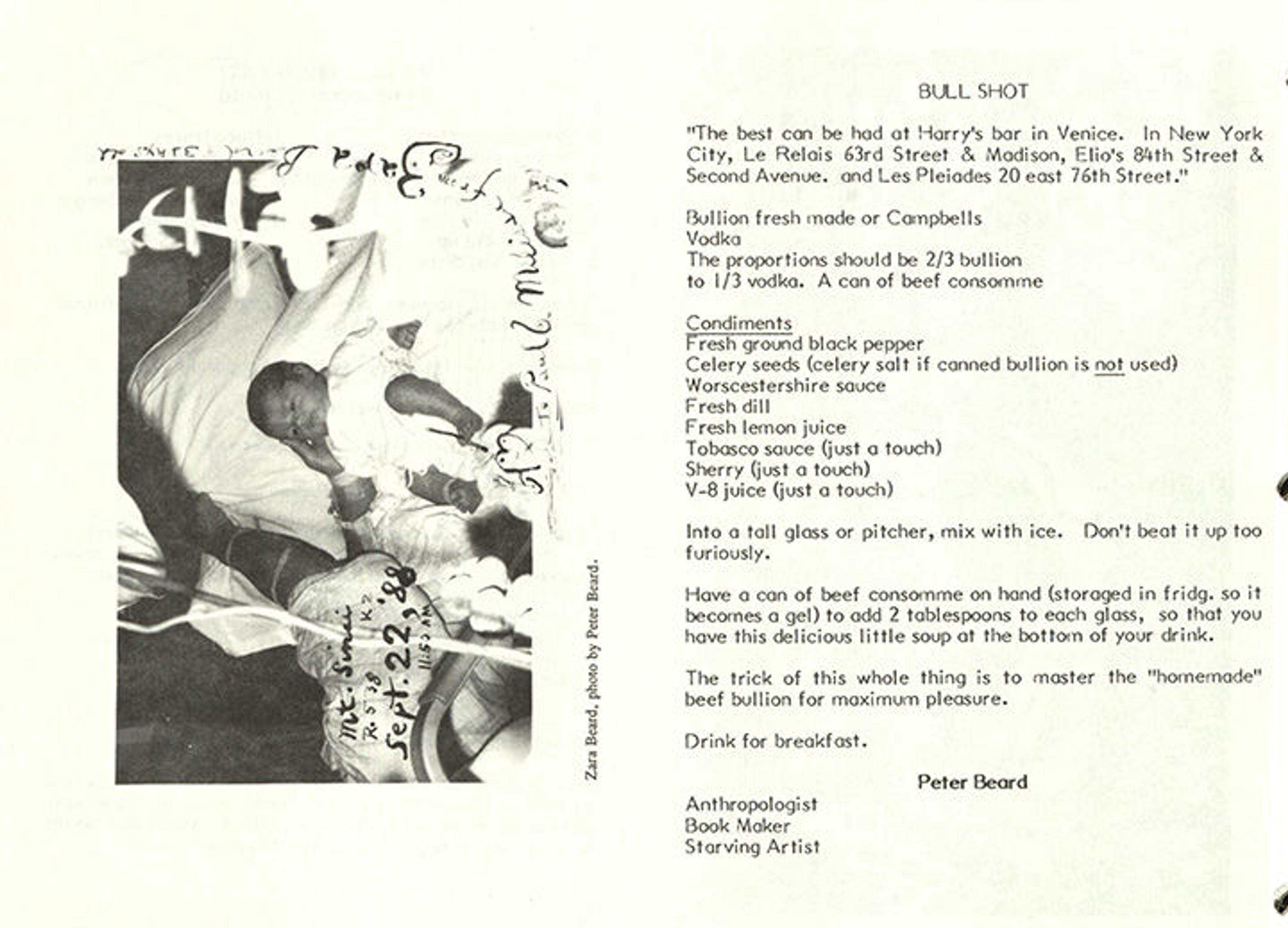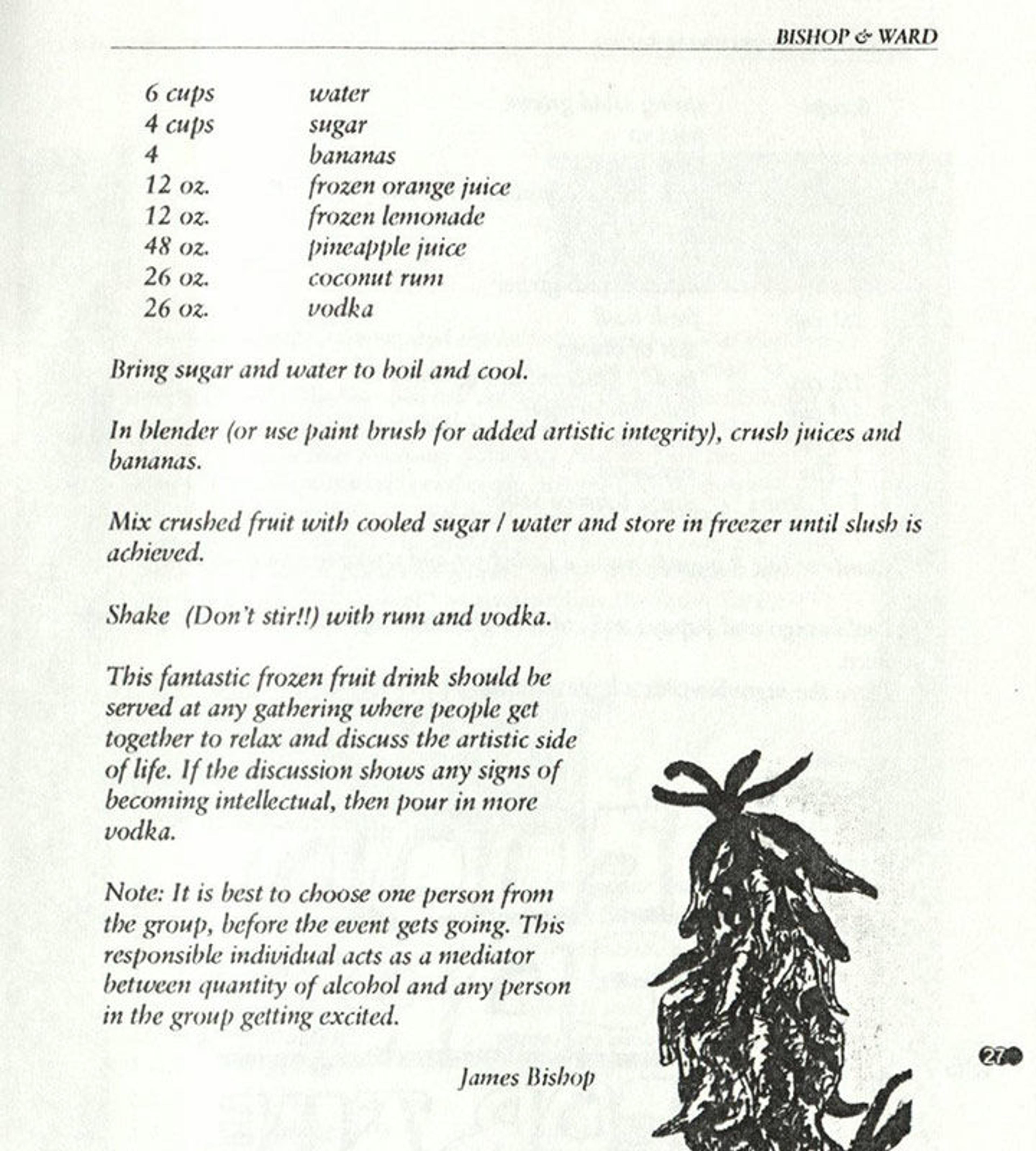
Legendary Surrealist Salvador Dalí enjoying some wine; from his cookbook (which includes a recipe for "Cocktail Casanova"), Les Dîners de Gala. Paris: Draeger, 1973.
When Damien Hirst was asked why the YBAs [Young British Artists] still gathered at the Colony Room Club, years after its heyday, his reply was simple: "It's because artists like drinking."
—"Drinking Scenes: The Relationship between Artists and Alcohol," Apollo Magazine (December 17, 2015)
«Perhaps the best proof of Hirst's claim that "artists like drinking" is photographer Robert Heinecken's recipe for a "Serious Martini." It is a two-ingredient masterpiece: English gin and a California lemon. Freeze the gin for five to six hours, pour no less than three ounces into a chilled glass, add the juice from half the California lemon, and, in his inimitable words, "serve and repeat for maximum effect." Heinecken does offer a few words of restraint, however, noting that "this drink is not recommended before 11:00 a.m."»

Barsel, Deborah. The Photographer's Cookbook. New York: Aperture, 2016.
If you are looking for something before 11, though, "anthropologist, book maker, [and] starving artist" Peter Beard can help you out. In a book composed entirely of artists' recipes, The Starving Artists' Cookbook, Beard provides a recipe for a "Bull Shot," which he advises you "drink for breakfast." The proportions are simple on this one as well: two-thirds bullion, one-third vodka. When mixed with "Tobasco sauce (just a touch), sherry (just a touch), V-8 juice (just a touch)," it is the ideal way to start off your day as a starving artist. And if you don't happen to have any beef consommé lying around, Beard helpfully provides a list of bars where you can find a Bull Shot: three are right here in New York, but "the best can be had at Harry's bar in Venice."

Eidia, Paul and Melissa. The Starving Artists' Cookbook. New York: Eidia (Idea) Books, 1991.
If you're hosting a party, artist James Bishop has an "adventure in drink" for you. Unlike the previous recipes, this one isn't as baldly alcoholic. In fact, there is more juice than booze in this "fantastic frozen fruit drink"—72 ounces of frozen lemonade, orange, and pineapple juice, compared with a modest 52 ounces of coconut rum and vodka. But like any good artist, Bishop knows how to push this cocktail into the realm of excess: "If the discussion shows any signs of becoming intellectual," he advises, "then pour in more vodka."

Cookartbook '98. Calgary: New Gallery Press, 1998.
Filippo Tommaso Marinetti and the Futurists got in on the cocktail recipe game in a cookbook described as "one of the best artistic jokes of the century," according to Lesley Chamberlain's 1989 introduction. Comedic or not, the aims of the cookbook were quite grandiose: "The Futurist Cookbook was designed to wrench food out of the nineteenth-century 'bourgeois' past and bring it into the dynamic, technological, urban twentieth century." Whether or not it achieved its aims is debatable (at best), but it does offer up several unquestionably unique takes on a cocktail.
"The Great Waters," for instance, is made of up of four kinds of liquor (grappa, gin, kummel, and anise liqueur), with the instructions to "float a square of anchovy paste wrapped pharmaceutically in a wafer" on top. No matter how much you might like to drink, it would be difficult for anyone—artist or otherwise—to truly embrace a drink with pharmaceutically wrapped anchovies floating in it.
Another is composed of three parts alcohol (dry red Barbera wine, citronade, and Campari bitters) and includes the following flourish: "Into the liquid put a square of cheese and a square of chocolate threaded on a toothpick." While alcohol, cheese, and chocolate individually bring pleasure the world over, this Futurist invention lives up to its name, setting out to destroy all three in a single undrinkable "Alcoholic Joust."

Marinetti, F. T. The Futurist Cookbook. San Francisco: Bedford Arts, 1989.
If you, like artists, enjoy drinking, try out one of these recipes and let us know how it turns out. While we can't all be artists, maybe we can at least learn to drink like one.